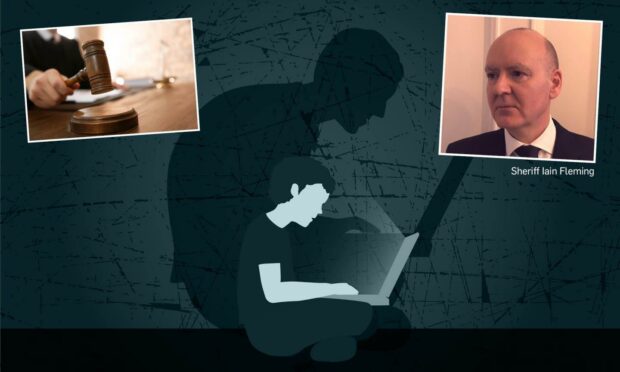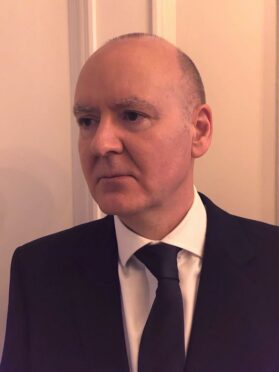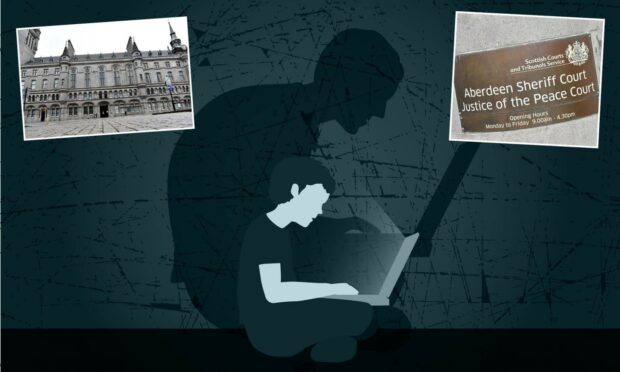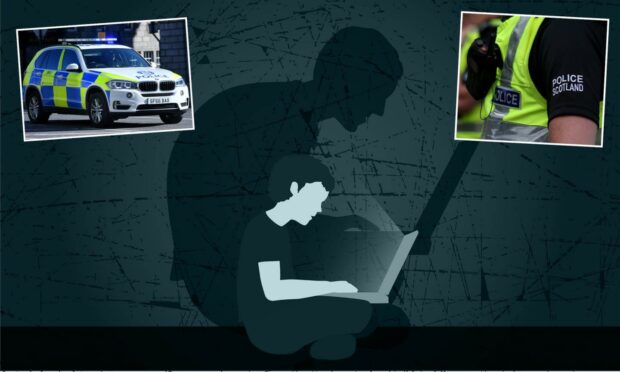A top sheriff, who has dealt with multiple cases involving people being snared by paedophile hunters, has said new sentencing guidelines could be brought in for such cases.
As part of an investigation into the world of online paedophile hunter groups, the Press and Journal spoke exclusively to Sheriff Iain Fleming, of the Scottish Sentencing Council, for a look at the finer legal issues associated with the controversial subject.
The sheriff, who has dealt with two such trials in the last year and a half, one involving paedophile hunters and another involving police, as well as a further five or six in which guilty pleas were tendered, discussed sentencing and factors that are taken into consideration.
Sheriff Fleming explained the distinction between offences involving a paedophile making contact with a real child and a decoy posing as a child.
He said where a person is found to have communicated indecently with someone pretending to be a child, the most they could be convicted of is an “attempted crime”.
He said: “A completed crime cannot be established because there is no child.
“The law distinguishes between attempted crimes and fulfilled crimes, for instance, murder.
“One receives a lesser sentence for attempted murder than one would do for murder.
“The other thing is, if one looks at the question of harm, there is no harm because there is no child to have been harmed.
“To approach things from a slightly different angle, if one were to sentence both cases in exactly the same way, it might be a justifiable criticism from those who are advocating on behalf of the child that the same sentence was imposed on an offender where there was no harm caused as was imposed when there was actual harm involved to a child.
“There’s also an English case which is persuasive which indicates one of the factors in sentencing in cases such as that is that there is no actual child who’s been harmed.
‘It’s not the sole purpose, in my understanding of these groups, simply to present a case for a successful prosecution’
“It’s just one of the things that the judge needs to take into account amongst the welter of other information that’s available.
“It will make a difference, but the tangibility of the difference is case-dependant.”
The Scottish Sentencing Council is working on producing offence-specific sentencing guidelines for some sexual cases, and Sheriff Fleming indicated such guidelines could also be introduced for cases involves adults posing as children.
He said: “The Scottish Sentencing Council is looking, in broad terms, at the possibility of introducing a guideline on sexual offences.
“That’s being considered at present and the offence-specific guideline may come in.
“In general terms, there are no offence-specific guidelines in Scotland that are yet in place, but I do emphasise that the general guidelines will apply, so there are sentencing guidelines in place for cases of this nature.”
It is understood the council has committed initially to producing offence-specific guidelines in relation to sexual cases which involve sexual assault and indecent images of children.
Sheriff Fleming said he had no direct experience of legal pitfalls that groups sometimes fall into, but explained it is not always their sole aim to present a successful case for prosecution in court.
‘I’ve heard of the occasional challenge to their evidence’
He said: “At the end of the day, one of the functions of the judge is to deal with the evidence that’s presented and to ensure it’s admissible evidence, that is to say, it’s relevant evidence, competently and properly obtained.
“There may be, from time to time, legal challenges. For instance, entrapment of an individual, that’s to say encouraging or persuading an individual to do something they wouldn’t otherwise do, would be something that’s objectionable.
“If the purpose of these groups is to expose sexual offenders to the wider community, as opposed to presenting a document or a piece of evidence to the police, then these are two perhaps parallel but nevertheless separate concepts.
“It’s not the sole purpose, in my understanding of these groups, simply to present a case for a successful prosecution. They’re looking to achieve other ends also.
“Anecdotally, through speaking to colleagues, I’ve heard of the occasional challenge to their evidence, but I couldn’t go as far as to say I’ve had any direct experience of any pitfalls.”
The sheriff also discussed the differences between cases involved a paedophile hunter posing as a child, and a police officer going undercover posing as a child.
He said: “Looked at through the lens of a sheriff sitting in court, they are broadly similar.
“What I don’t know is whether or not there are other aspects which have been filtered out because the Crown doesn’t accept that the evidence is admissible, I don’t know if there are aspects the police are aware of which I’m not.
“At the end of the day, what any sheriff or judge is being presented with is a prosecution case in which evidence of pretty unpleasant but broadly similar type behaviour is led before the jury or before the courts.
“So, in as much as the offences constitute specific sections of the Sexual Offences (Scotland) Act, they’re pretty similar, but that’s not to say there are not other significant or tangible differences which I don’t know anything about.”





